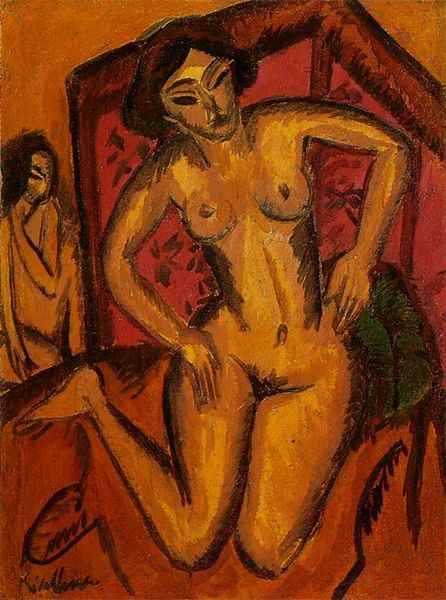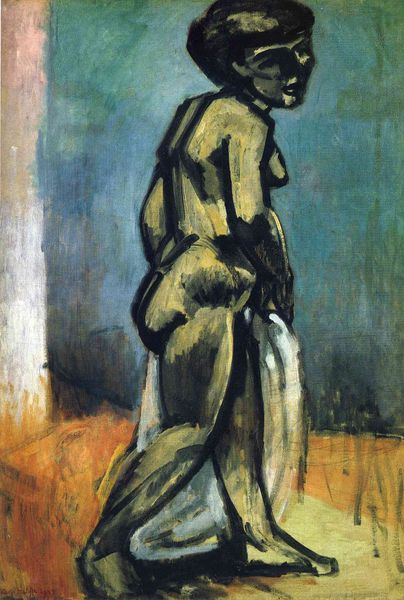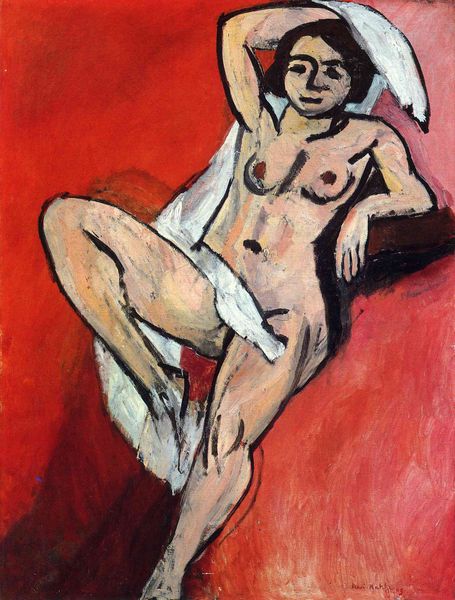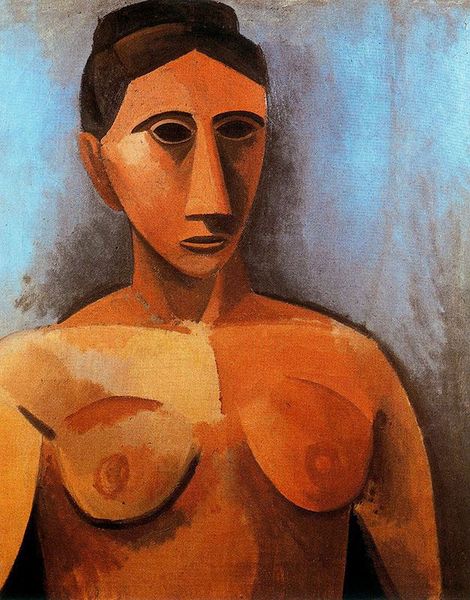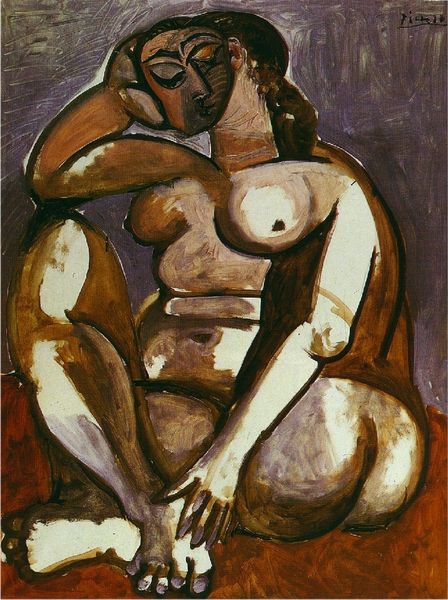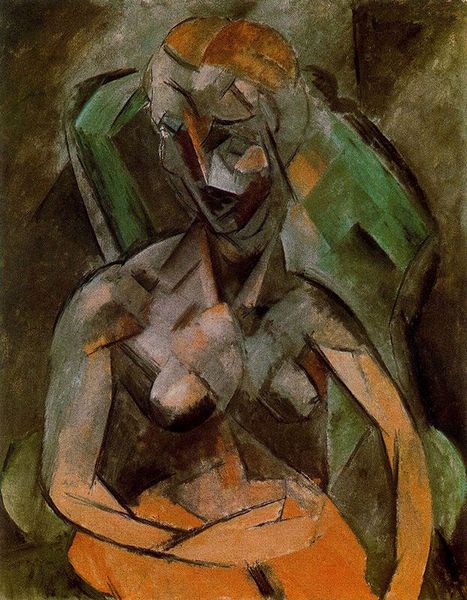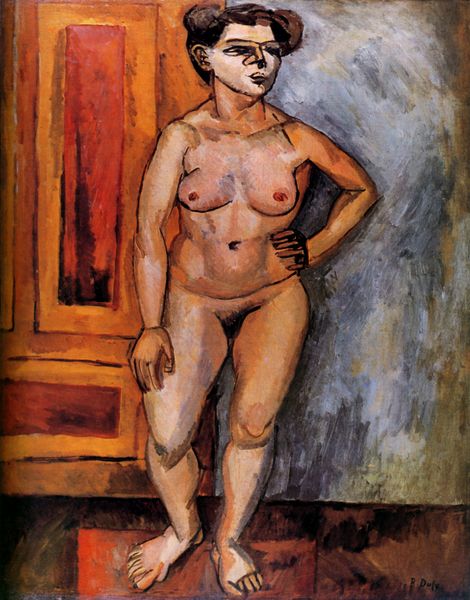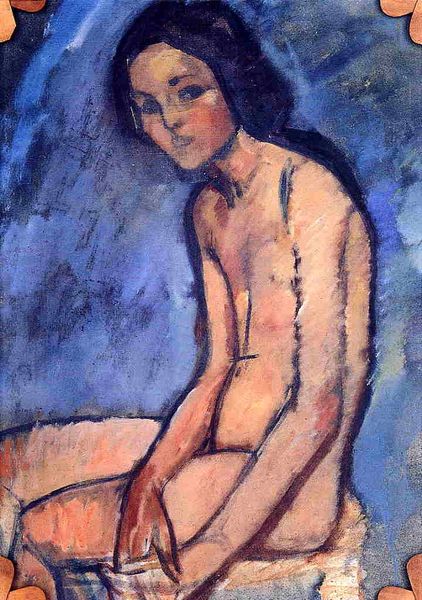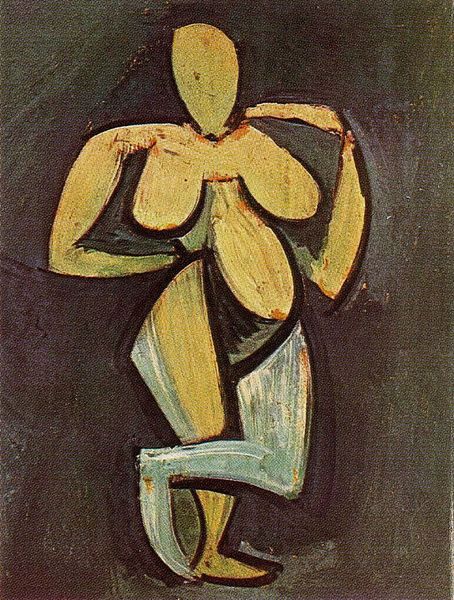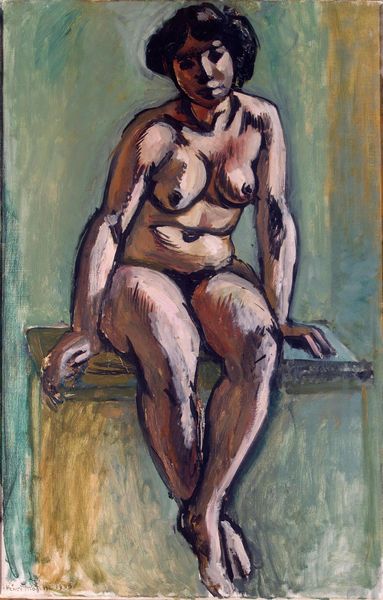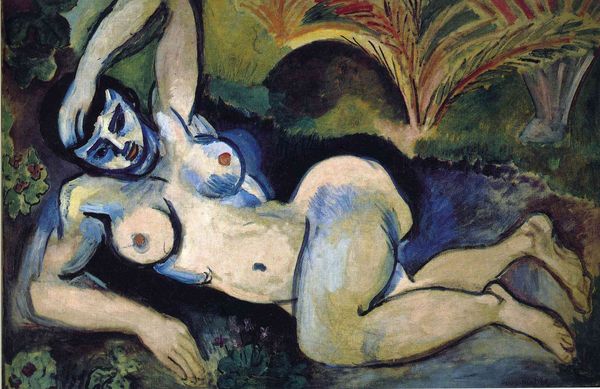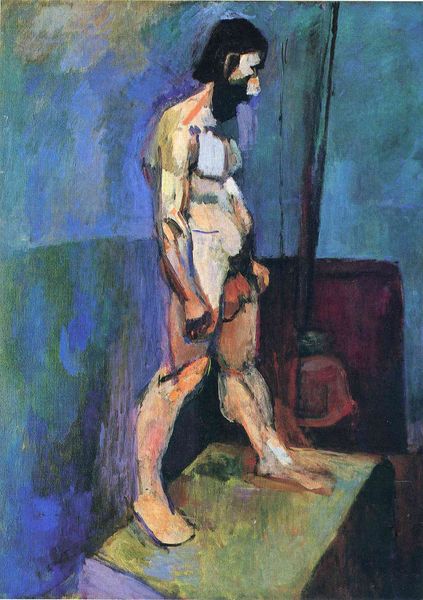
Copyright: Public domain US
Editor: We're looking at Henri Matisse's "Nude (Black and Gold)" from 1908, currently housed at the Hermitage Museum. It's an oil painting that definitely departs from traditional representations of the nude figure. The brushstrokes are bold, and the colors, especially the use of black and gold, create a really striking, almost jarring effect. What stands out to you, looking at it from a formal perspective? Curator: Initially, the manipulation of form seizes my attention. Consider how Matisse deconstructs the conventional nude, fragmenting the body into simplified, almost geometric shapes. Note especially the stark contrasts in color and value, and how these divisions define the figure's contours. How does this fragmentation contribute to the overall expressive quality, would you say? Editor: It's interesting – the fragmentation makes it feel less about realistic depiction and more about… almost an emotional response. Like the bold strokes and unconventional color choices are conveying something beyond just the visual. Curator: Precisely. It invites a phenomenological interpretation of form, color, and texture. Focus for example, on the tension created by juxtaposing dark contours against areas of undifferentiated light. This suggests a departure from a traditional modeling of form, challenging our preconceived notions of perception itself. Do you find the spatial ambiguity reinforces this emotional dimension? Editor: Definitely. It makes the figure seem almost to emerge from or dissolve into the background, intensifying that feeling of transience. The texture is also so rich with the visible brushstrokes, emphasizing materiality. This seems more revolutionary, focusing less on subject, but pushing at the boundaries of colour and representation itself. Curator: It serves, then, to undermine the distinction between representation and pure form. Through a sophisticated semiotic interplay of line, tone and hue, a statement of aesthetic autonomy comes into being. It highlights the canvas’s potential to operate beyond the descriptive or narrative. It seems to offer both a critique and rebirth of figure painting’s historic tenets. Editor: Absolutely! Seeing how you break it down has really opened my eyes to how Matisse used form and colour not just to represent, but to express and provoke. Thank you for pointing this out. Curator: Indeed. Understanding visual syntax as the locus of expression may very well yield deeper appreciation of such modernist articulations.
Comments
No comments
Be the first to comment and join the conversation on the ultimate creative platform.

